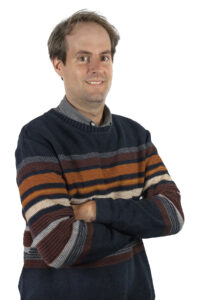Theoretical physicist Juan Rojo of VU Amsterdam and Nikhef commented in the media on new research into the interior of the proton. It turns out that there is more antimatter in it than expected.
Rojo was interviewed in an article in Quanta Magazine. The Volkskrant also spoke to him.
The reason for the interviews is a publication in the journal Nature from Argonne National Laboratory in Illinois. There, the SeaQuest experiment was done for twenty years to find out what is going on inside the proton.
It has long been known that the simple but classic picture of three quarks (up up and down) forming a proton is wrong. In reality, protons are a swirling sea of quarks, antiquarks and gluons, apart from the three basic quarks.
This picture is described by the theory of quantum chromodynamics (QCD) from the 1970s. Calculating with the theory is still extremely difficult because the gluons, the particles that transmit the force between the quarks, are themselves sensitive to that Strong Nuclear Force.
The picture within QCD of the proton is two up-quarks and one down-quark in a swirling sea of briefly formed pairs of more quarks and antiquarks, and gluons. That the whole thing remains in balance is what experts call a miracle.
But it gets even crazier. Se
There are a variety of theoretical explanations for this asymmetry, but the relatively simple experiment in Illinois cannot decide which is the best, experts say in Quanta Magazine. According to QCD expert Rojo, the new result is important for accelerator experiments that search for unknown phenomena with colliding protons.